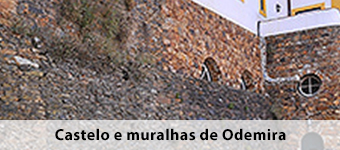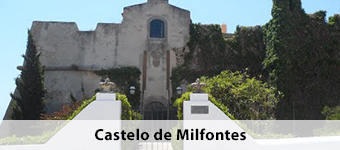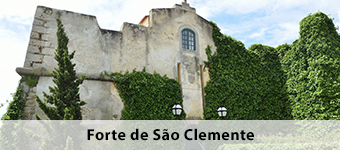Heritage Litoral Alentejo
The Alentejo coast is unique and unparalleled beauty of the region, for a long time and for many reasons, a privileged region with its natural conditions, climate and tranquility, high demand for those who want a different holiday or for those who want an end-to -semana out of their habit.
From north to south of Alcacer do Sal Odemira the Alentejo coast is an area with distinctive natural heritage, with its beaches of losing breath and the view, but without forgetting the rural landscape to the interior, the blood alentejano meets with the foam of the Atlantic Ocean. And adding to the landscape the flavors and scents of local gastronomy and culture of the Alentejo knowledge that the sum of these points contribute to a unique and unforgettable experience.
For those runs along the coast of Alentejo for its interior and mountainous regions, or by the sea, there are millions of ways in which are lost but are they explore a unique heritage, the Sado and Mira rivers, natural reserves of the Sado Estuary, the Santo André lagoon, the Natural Reserve of Costa Vicentina, the ancient monuments that tell a thousand stories or even the plains painted with multiple tones with its cork oak forests or coastal pinewoods.
The coast is an area of great commercial and military strategic importance, and the Alentejo coast is no exception. Today they can be seen 7 fortifications, protecting strategic locations, from ancient times to modern settlements, always with the aim of defending the property, assets, interests and civilizations.
Since Alcacer do Sal, through Grândola, Troia , Santiago do Cacém, Sines and Odemira, sites that require further exploration, since its natural heritage to the built heritage and history.
Alcácer do Sal
Artefacts found in this region bear witness to human presence for more than 40,000 years, but only in the Mesolithic period is that are the first manifestations of agricultural production and livestock, there is also exchange of products such as ceramic pieces.
In the Iron Age, this region had a great urban development, including having its own currency. Upon the arrival of the Romans, the town known as Celtic Bevipo, came to be called Salacia Urbs Imperatoria , getting the Latino Law City status. Keeping its importance over the centuries, both by its status as the production of wool and salt.
In 715 gives the Arab occupation, lasting about 4 centuries, Alcacer do Sal becomes capital of Al-Kassar province, with the Sado river occupied by eastern browsers and North Africa, one of the great importance of ports to the Iberian Peninsula.
In turn, the Sado river is one of the most important centers for the development of Alcacer do Sal, due to navigability and fertility, which dominated the wheat, barley, mounted, olive groves and rice paddies.
High in the hills alcacerenses, is the Alcacer do Sal Castle, built by Caliph Almohad Ya’qub al-Mansur in 1191, when the Muslim reconquest of this region, as in 1158, D. Afonso Henriques took Alcacer Sal. later, in 1217, this region and its fortification were reconquered by Alfonso II, donating it to the Order of Santiago de Espada.
In the sixteenth century, Alcacer do Sal got a big boost to commercial level due to the production of salt and the richness of this production was promoted to the construction of churches and palaces, and founded the Carmelite Convent of Aracelli.
With an extension of 23,160 hectares, the Natural Reserve of Sado Estuary has a great biological variety in its wetlands and upland regions. A fertile reserves and rich both fauna level as flora covers an ecosystem with many species, from salt marshes to a variety of birds such as white storks, pink flamingos, leg Long, herons, birds of prey, among others, also following by a variety of mammals such as the otter-European, foxes, deer, badgers, mongooses, among others. However, it is a very attractive area for the man, who from an early age, was housed and developed activities such as agriculture, fisheries, salt production, shellfish collection and livestock.
Currently, with this natural heritage and fortifications, Alcacer do Sal also features in the Comporta Comporta Estate Winery and the Rice Museum, and Clod can find if Ethnographic Museum.
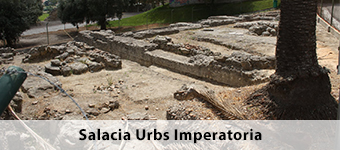
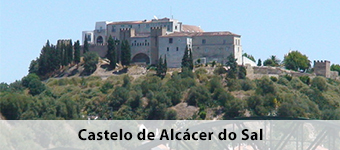
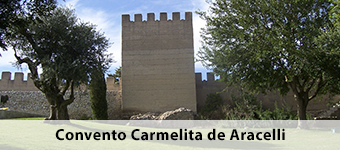
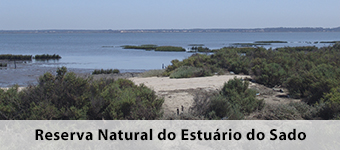
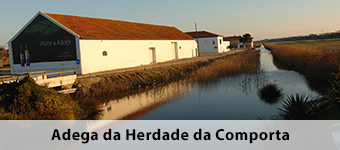
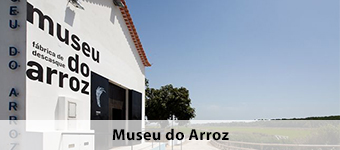
Grândola
At a crossroads of plains pine and its Serra, Grandola with its Alentejo character, friendly and welcoming, joining the long sandy beach of Melides to Troia, which itself has a unique and rare beauty diversity.
As found traces, it is thought that the human occupation dating back to the Bronze period in Melides and Lousal Megalithic on. While Troy is constituted in the Roman era, as one of the biggest fish salting centers. In Grândola were also found spa and a dam dating back to Roman times. In Medieval times, that person was integrated in the Order of Santiago, but only in 1544, obtained the charter by King John III, becoming independent of Alcacer do Sal.
A region whose main activity was agriculture and later, industrial activity, particularly cork and also the mineral exploration in the Skull Canal by the end of the nineteenth century.
Currently, the region had a hotel boom, which was built in the Resort Troia, including Troia Golf Troia and the Casino. However, you can still visit its Roman ruins, keeping alive the memory of their origin.
Already in Grândola, a museum to visit is the Frayões House Metello, former residence of nobility, is now the Museum and Cultural Heritage of the municipality of Grândola, welcoming museum collections, exhibitions, presentations and educational service.
Vale de Figueira, is the dolmen of Pedra Branca, a megalithic monument used as a necropolis in the late Neolithic period, all his buried are accompanied with articles such as necklaces, polished stones and axes.
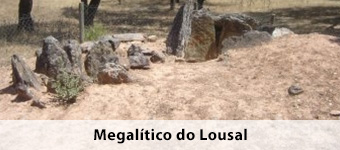
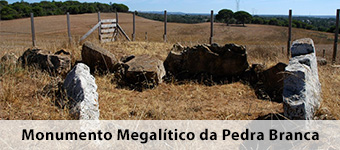
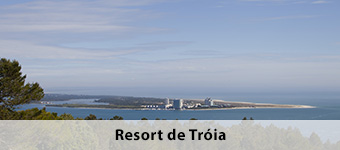
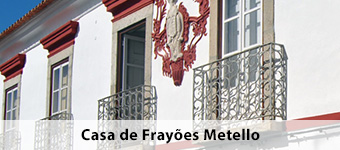
Santiago do Cacém
On the highest hill of Santiago do Cacém, the castle faces the sea and its houses traverses the slope accompanied by valleys to the ruins of Miróbriga a Roman legacy unique. The city of Santiago do Cacém witness a truly remarkable history, from its geography, natural heritage and built heritage, which join the Alentejo plain and the Atlantic Ocean, which always proved favorable to man.
Traces of excavations in the Old Castle, the Roman ruins of Miróbriga proved that this region has been inhabited since the prehistoric period. Later, the Celtic village erected a fortified in the third century and BC However, it was in the Roman period, this town met a different life, becoming the main Roman city on the west coast south of the Tagus, which has a Forum with its temple, spa and a Roman hippodrome, unique in Portugal.
The ruins of Miróbriga were classified as Public Interest in 1940, belonging to the Portuguese Institute of Architectural Heritage and Archaeological since 1982. These ruins were discovered by humanist André de Resende in the sixteenth century, that said as Merobrica village and the Bishop of Beja D. Frei Manuel of the Cenacle promoted the excavations in the nineteenth century. In the 40s of the twentieth century, Dr. João da Cruz e Silva, Santiago do Cacém investigator who initiated serious and systematic research. Since the year 1959 to the 70, D. Fernando de Almeida conducts several campaigns of excavations in Miróbriga, in which he defended in his thesis that this would be a support of sanctuary for its pilgrims. Currently has a Reception and Study Centre, built by IPPAR, advocating the philosophy of intervention of archaeological monuments and creating infrastructure, improved its explanation and interpretation.
After the decline of Miróbriga in 712 the Moors conquered Santiago de Cacém, building the castle on the hill, which obtained the status of National Monument. Staying busy until the twelfth century, after several battles, conquest and reconquest, until 1217 when D. Afonso II confirmed its donation to the Order of Espatários.
In 1512, Santiago do Cacém became the county seat, receiving its charter by King Manuel I. Already in 1759, passed to the Crown, and in 1832 became part of the state.
There are many places to visit, particularly in Santiago do Cacém, the Wind Mill Farm, the Farm Worker Museum Abela, the Municipal Museum of Santiago do Cacém and the Treasury of the Collegiate of Santiago. In Vila Nova de Santo André, is the Badoca Safari Park.
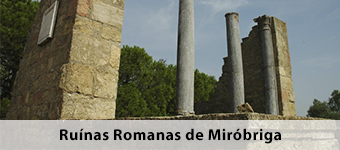
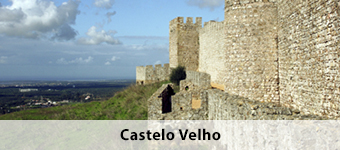
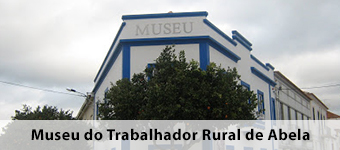

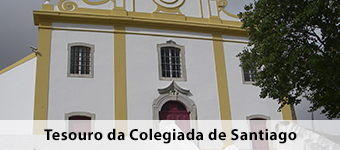
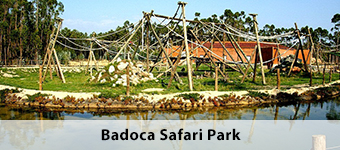
Sines
The town of Sines dates back to the Neolithic period, in which the human presence is developed near the Ribeiras of Morgavel, Junqueira and Berlogão, as it is a quite area rich in fish and seafood. The Punic or Carthaginians began using Pessegueiro Island as a port area and probably a Celtic village called Cinetos have lived in this region, in which the current name has derived. Another explanation for the name Sines comes from the Latin root for bay “sinus”. Centuries later, with the Romans, this region became the port city of Miróbriga.
With the Arab occupation, his legacy goes by new agricultural and industrial technologies. In 1217, during the reign of D. Afonso III, Sines was conquered by the Order of Santiago de Espada, being donated to this order as payment for their services in the fight against the Moors. In 1362, receives the charter and also in the XXV century is built the fortress. The Sines Castle is one of the rare examples of a medieval castle on the coast line, with one of the best sights, this was built in the first half of the fifteenth century, welcoming his people when the corsairs attacks, being so connected to the foundation county, and its construction required by Dom Pedro I to be delivered the charter to the town and subsequently handed over its administration. In 1517, it was donated to the Order of Santiago. This castle is on a cliff in when distrusts successive occupations from the Paleolithic traces of Roman and Visigoth stonework shows the reuse of materials belonging to a Visigoth basilica of the seventh century. One of the most iconic characters in the history of Portugal, Vasco da Gama was born in the castle keep of the castle, while his father was mayor get the Sines village.
Regarding the Revelim Fort, this fort is at the west end of Sines and had the duty to defend the village, along with the castle, against the privateers and pirates who invaded the coast of Sines. This fort was built in the seventeenth century under the projection of the king’s engineer, Massai.
The Peach Tree Island have first been inhabited by Carthaginians, before the Second Punic War, between 218 and 202 BC, and was later resettled by the Romans, a production center for prepared fish, which currently are traces of salting tanks. For centuries, the island acted as a refuge for pirates, being a factor in the construction of a fortification in 1588. This construction was halted to focus efforts on building the Fort of St. Clement, in Vila Nova de Mil Fontes. In 1603, they are resumed the construction of the fort on the island, by order of King Philip III, in which was included a seaport. Only between the years 1661 and 1690, it was completed “Off Strong”.
The fishing town of Sines, with its bay breathtaking to those who visit, developed from the 70s, with the installation of deep water port and the development of subsequent industries. Today, Sines is a balcony with a beautiful view of the vast ocean mass and being an observatory for the activity of large vessels and fishermen and sailors.
Sines is a port that offers unique natural conditions of deep water, which allow the berthing of large ships, the heavy industries. Sines has become a link between Portugal and the rest of the world.
In Sines, you can still visit its Museum and the Treasury of the Church of Our Lady of Salas.
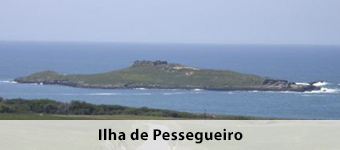
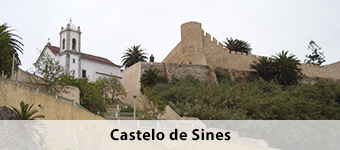
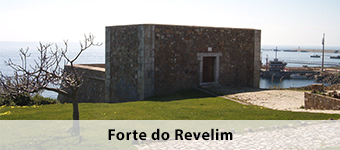
Odemira
Not fully know if your home, but Odemira has always been populated, between Romans and Arabs, they can left customs, stories and ways of living. Its recapture was already quite late, held by the friars of the Order of Santiago, remaining national territory since 1238. From the little that remains of the castle and the surrounding visible fortification today is based the Municipal Library and its Odemira walls are articulated to form a notion of urban village expansion. The medieval castle was taken by the Moors in 1166, in place of oppidum Roman. After his Portuguese reconquest, the village received its charter of D. Afonso III, in the year 1256 and nine years after start up reconstruction work. The Master of the Order of Santiago, D. Paio Peres Correia, in 1319, donated the castle of Odemira to the Bishop of Porto, D. Pedro Saviors. At the behest of King Dinis was held the rebuilding and construction of a new fence. In 1510, Odemira again received its charter by King Manuel. Already, in the reign of D. Duarte, D. Sancho de Noronha and D. Mécia de Sousa became Counts of Odemira. It was later donated to the 1st Duke of Cadaval, Nuno Alvares Pereira de Melo. Regarding the Fort of San Clemente, in Vila Nova de Milfontes, erected between 1599 and 1602 during a period of strong attacks by pirates and pirates, so their aim was to protect the Alentejo coast, especially in the Mira River entrance. Today the wall around it were the castle, along with the viewpoints of the Barbican, are the only remaining monuments of ancient outer fortification. In 1939, he went on to serve hotel, as Manor house. In 1978, it was classified as a Public Interest.
Odemira has a coastline of 55 kilometers which is integrated in the Natural Park of Southwest Alentejo and Costa Vicentina. An exceptional beauty in their lands of Vila Nova de Milfontes and Zambujeira do Mar.
